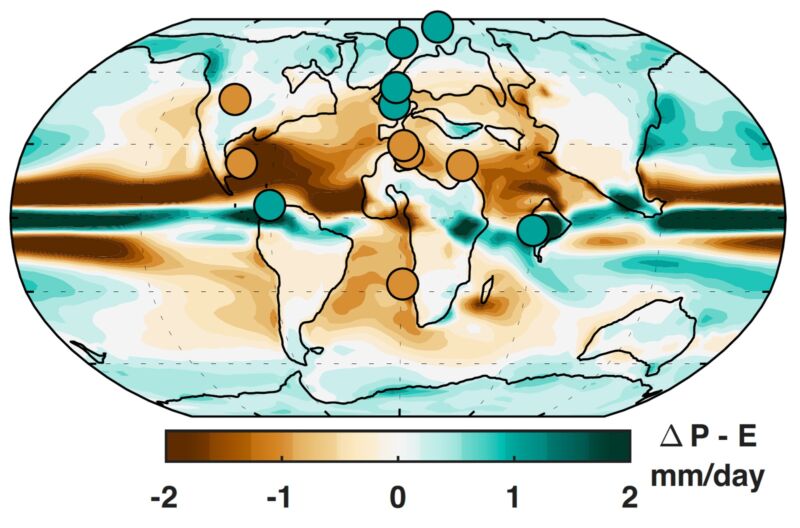New maps of ancient warming reveal strong response to carbon dioxide

Enlarge / Global map of rainfall change due to warming 56 million years ago: green = wetter, brown = drier. Circles show where geological data show it became dryer or wetter, as a check on the new results. (credit: Tierney et. al.)
In a study published in PNAS, professor Jessica Tierney of the University of Arizona and colleagues have produced globally complete maps of the carbon-driven warming that occurred in the Paleocene Eocene Thermal Maximum (PETM), 56 million years ago.
While the PETM has some parallels to present warming, the new work includes some unexpected results-the climate response to CO2 then was about twice as strong as the current best estimate by the Intergovernmental Panel on Climate Change (IPCC). But changes in rainfall patterns and the amplification of warming at the poles were remarkably consistent with modern trends, despite being a very different world back then.
A different worldThe warming of the PETM was triggered by a geologically rapid release of CO2, primarily from a convulsion of magma in Earth's mantle at the place where Iceland is now situated. The magma invaded oil-rich sediments in the North Atlantic, boiling off CO2 and methane. It took an already warm, high-CO2 climate and made it hotter for tens of thousands of years, driving some deep-sea creatures and some tropical plants to extinction. Mammals evolved smaller, and there were big migrations across continents; crocodiles, hippo-like creatures, and palm trees all thrived just 500 miles from the North Pole, and Antarctica was ice-free.